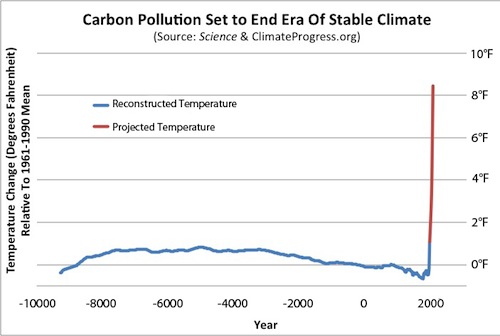 There’s an amusing new meme floating around among conservatives desperate to salvage the sinking ship of Ken Cuccinelli’s gubernatorial campaign — namely, that he is “feared” by the Republican establishment because, while they are propped up by big business and crony capitalism, he is a man of the people, a superhero fighting to unleash liberty!
There’s an amusing new meme floating around among conservatives desperate to salvage the sinking ship of Ken Cuccinelli’s gubernatorial campaign — namely, that he is “feared” by the Republican establishment because, while they are propped up by big business and crony capitalism, he is a man of the people, a superhero fighting to unleash liberty!
Here’s how Mason Conservative put it (favorably quoted by Bearing Drift and Conservative HQ):
Make no mistake; you will never hear this blog claim Bill Bolling is a RINO. Far from it. But rather, Bolling is an establishment crony-capitalist conservative who, like his Dixiecrat forefathers, just wants to leave everything the same and let big business do what big business does. Cuccinelli is looking to apply true limited government principles and truly unleash capitalism in Virginia. Instead of our business being reliant on the federal government, state tax breaks, and giveaways he wants to create a commonwealth of opportunity and freedom.
You gotta give these guys credit: the Cuccinelli-as-Robin-Hood spin is a gem, and it’s not like they have much to work with. But sadly, the facts don’t accord with this fairy tale.
It’s really not that hard to ascertain for whom our Ayatollah General is fighting. You can start with his donor list. Clearly, big businesses are not too afraid of him, since they are shoveling hundreds of thousands of dollars in his direction. Representatives of the fossil fuel industry seem particularly brave in this regard, as evidenced by the $352,341 they’ve given him from 2011 to 2012. That includes $52k from coal and fracking giant Consol Energy, over $25k from Big Coal company Alpha Natural Resources, $40k from Dominion, over $27k from Appalachian Power Company — and at least $50k from the Koch brothers and their firm Intrust Wealth Management.
You can guarantee that all of these folks are dead set against crony capitalism — and darn sure that Gov. Cuccinelli will be too! Or perhaps they are just really satisfied with his endless assaults on EPA and climate science, which directly aid their bottom line. It may be that the nearly $100k he’s received from the health care industry over the same time period has to do with his championing of their bottom line too — vs. those evil bureaucrats who want to eat into their profits by forcing them to treat patients with pre-existing conditions.
If Cuccinelli is truly a scourge of the big business establishment and champion of the little guy, it’s hard to find much evidence of it. An Attorney General has broad powers to challenge big businesses in court when they disadvantage consumers, employees or the general public. Sadly, rather than taking on such battles, Cuccinelli has spent his taxpayer-funded time in the AG’s office engaging in jeremiads against the Federal government, climate scientists, gays and women. It’s hard to find any evidence of him helping any of the people who really need help.
There’s no question, then, that he will continue to be as subservient to the needs of multinational corporations as the rest of his party. So why have some Republican business leaders been ripping into him? Put simply, it’s because Cuccinelli is a lousy politician, positioned to lead his ticket to defeat.
Indeed, the whole vaunted “Tea Party vs. the Establishment” battle is not about who’s more “conservative” or more supportive of big business or more serious about balancing the budget. Rather, it’s a battle between experienced insiders who know (all too well) how to win elections vs. howling-at-the-moon yahoos driven by misinformation and conspiracy theories and willing to make no concessions to reality, common sense or to anyone who doesn’t look or think exactly like them.
The contrast between Cuccinelli and Gov. McDonnell frames the case perfectly. Despite his ultraconservative Regent University Master’s thesis proving that he is neither moderate nor mainstream, McDonnell has done a brilliant job in the past four years reframing himself as both. Bob’s for Jobs, remember?
Cuccinelli, meanwhile, does not seem capable of lowering himself to deal with such earthly concerns as jobs, roads or schools. And while it’s easier for McDonnell to distance himself from a 20-year-old thesis, how could Cuccinelli distance himself, say, from his 2010 subpoena of Professor Michael Mann, a bizarre document grounded in the darkest, strangest theories of climate change denial?
In fact, Cuccinelli is a great example of how the GOP has painted itself into a corner by first cozying up to, and then being taken over by, the Tea Party. Republicans will indeed rue the day they started their flirtation with this scary, extremist movement — a Frankenstein that is still running rampant thanks to the establishment types who breathed life into the monster.
Frankenstein, not Robin Hood — that’s who we’ll be facing this November. The good news is that this monster’s ugliness is bare and apparent for all to see.
 I just received press releases from both the Aneesh Chopra (on the front) and Ralph Northam (on the "flip") for LG campaigns. Congratulations to both candidates for getting on the Democratic primary ballot, and particularly to Aneesh Chopra for his impressive haul of 20,000+ signatures (more than twice the 10k required). According to the Virginia State Board of Elections, today is the first day candidates can submit petition signatures; the last day is March 28 (at 5 pm). Also worth noting is that the State Board of Elections recommends that candidates get at least 15,000 total signatures and 700 for each CD.
I just received press releases from both the Aneesh Chopra (on the front) and Ralph Northam (on the "flip") for LG campaigns. Congratulations to both candidates for getting on the Democratic primary ballot, and particularly to Aneesh Chopra for his impressive haul of 20,000+ signatures (more than twice the 10k required). According to the Virginia State Board of Elections, today is the first day candidates can submit petition signatures; the last day is March 28 (at 5 pm). Also worth noting is that the State Board of Elections recommends that candidates get at least 15,000 total signatures and 700 for each CD.


 There’s an amusing new meme floating around among conservatives desperate to salvage the sinking ship of Ken Cuccinelli’s gubernatorial campaign — namely, that he is “feared” by the Republican establishment because, while they are propped up by big business and crony capitalism, he is a man of the people, a superhero fighting to unleash liberty!
There’s an amusing new meme floating around among conservatives desperate to salvage the sinking ship of Ken Cuccinelli’s gubernatorial campaign — namely, that he is “feared” by the Republican establishment because, while they are propped up by big business and crony capitalism, he is a man of the people, a superhero fighting to unleash liberty! 
 Here are a few Virginia (and national) news headlines, political and otherwise, for Sunday, March 10. It’s now Daylight Savings Time, so make sure to set all your clocks ahead an hour!
Here are a few Virginia (and national) news headlines, political and otherwise, for Sunday, March 10. It’s now Daylight Savings Time, so make sure to set all your clocks ahead an hour!






